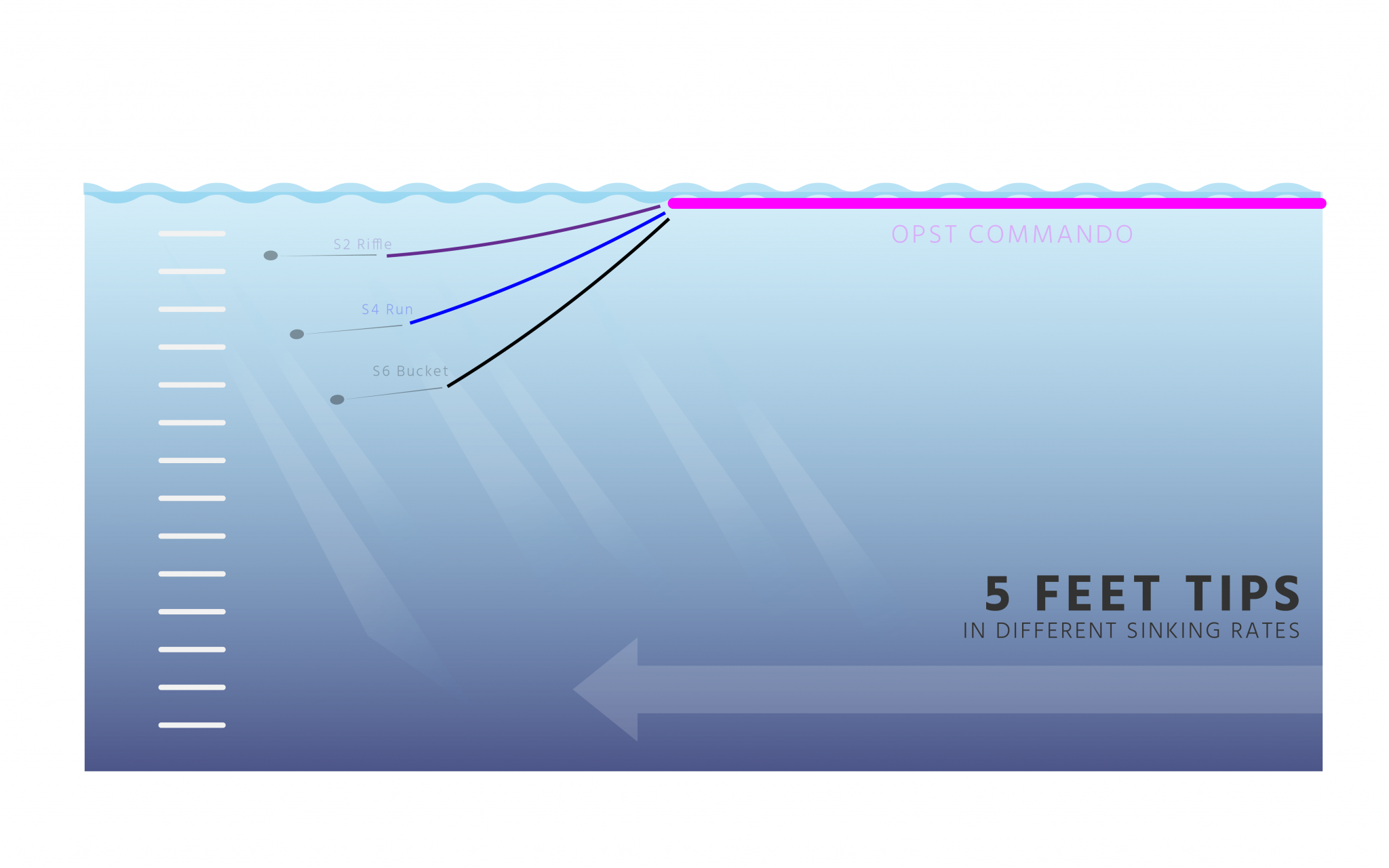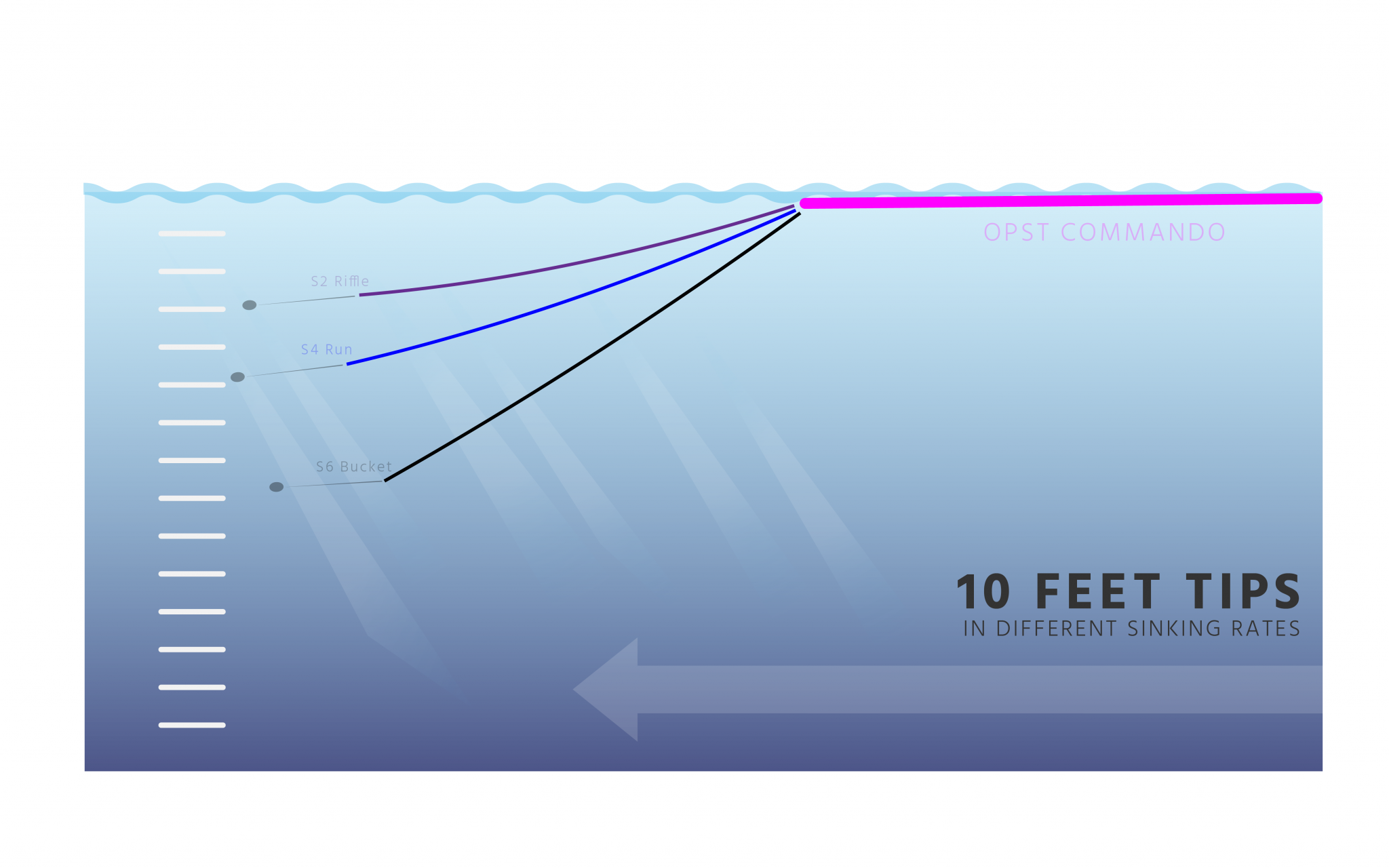Blog
Understanding OPST Tip System – Sink tips
Weight: All sink tips are impregnated with some sort of powdered tungsten, which makes them sink. The weight of sink-tips is measured in grains, 1 grain = 0.065grams. The industry came up with a simple and straightforward way to define the weight of tips: Tungsten weight (grain) per foot. For example, a T8 tip weighs 8grains per foot, or a T14 tip weighs 14grains per foot. Depending on the length of the tip so does the weight change of the tip:
OPST Commando Tip 5ft T8 = T8 x 5ft= 40gr
OPST Commando Tip 10ft T8 = T8 x 10ft= 80gr
OPST Commando Tip 10ft T14 = T14 x 10ft = 140gr
OPST Commando Tip 12ft T14 =T14 x 12ft = 168gr
| OPST COMMANDO TIP | TUNGSTEN | Weight in GR | |
|---|---|---|---|
| 5 ft | T 8 | 5 ft x T 8 | 40 gr |
| 10 ft | T 8 | 10 ft x T 8 | 80 gr |
| 10 ft | T 14 | 10 ft x T 14 | 140 gr |
| 12 ft | T 14 | 12 ft x T 14 | 168 gr |
However, it is not the T’s (Tungsten per foot) that determines whether you fish high or deep down. It is the density of the tip, how compact or dense the powdered tungsten is worked into the plastic coating of a tip which verifies this. This density is referred to as sink rate.
Sink rate: All sink tips have a defined sink rate and it determines how fast a tip is sinking. The sink rate is determined by the tips density, not by its weight i.e. Tungsten per foot. The standard sink measurement given by the industry is inch per second (ips), these measurements are taken in Stillwater conditions. For example: a sink rate 2 = 2 inches per second (S2); a sink rate 6 = 6 inches per second (S6). This means, the higher the number the faster a sink tip will sink.
Length: The length of a sink tip has an impact on how deep you can fish. A short sink tip cannot sink as deep as a long sink tip. Simply because the longer tip has a longer free fall.
So, what to do now? Keeping all aspects of a sink tips definition in mind, let us go practical:
Your first go-to whenever choosing or buying tips should be:
- The fly you are going to use; big, small, light, heavy, thin, or fat. As a small and light fly does not need much weight for turn-over; a bigger and heavier fly needs more mass for turn-over.
- The water you are going to be fishing in; big, small, deep, shallow. As water currents and depth of the fish lie, determine sink rate as well as the length of your tip.
Within each length and grain weight, OPST’s sink tips come in 3 different sink rates. The range goes from S2 down to S9, depending on what kind of Tip weight you choose. OPST came up with a brilliant idea categorizing the sink rates into 3 different water currents:
Riffle – shallow water from a foot to about three or four feet deep.
Run – medium depth water from three to about six feet deep.
Bucket – deep water for the deepest darkest holes, the deep winter runs.
This is a straightforward practical approach that everybody can relate to. Now just think of your fly and the environment you are fishing in and boom… you have chosen the right tip.
Tight Lines
Ps. For those who love the more scientific and physicist approach – OPST has not forgotten the ips’s and T’s on the boxes.


